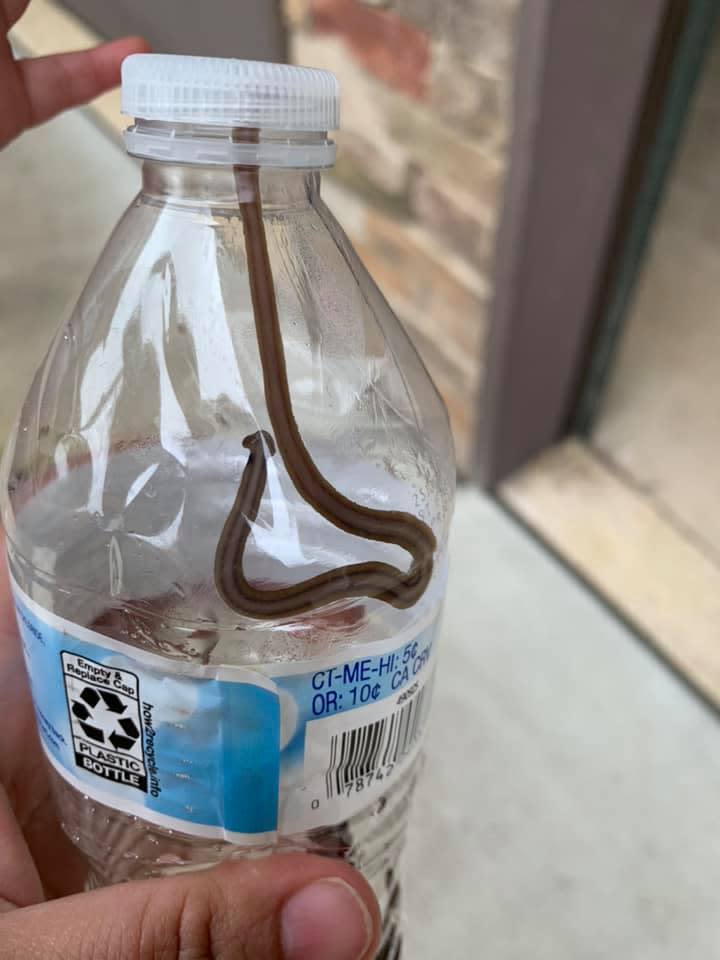'We have to get rid of it,' Missouri mom says after kids find invasive hammerhead worm
SPRINGFIELD, Mo. – When Jennifer Serfass heard her children yell, “Mom, look at this worm,” she expected an ordinary native earthworm. But this one had a bulbous mushroom head.
“It was really long,” Serfass recalled in a phone interview with the Springfield News-Leader, part of the USA TODAY Network. “It moved slowly, like a slug.”
Upon further research of the worm that had appeared outside her home on June 7, Serfass identified it as a hammerhead worm, or bipalium. And she realized it's considered invasive.
Serfass’ first reaction: “We have to get rid of it.”
She first considered chopping the pest into pieces. But it would simply regrow its tail, Serfass learned online. The Springfield Conservation Nature Center also said she needed to dispose of it, but not by way of a knife.
“I had read other people say to use salt because they’re similar to slugs, so that’s what I did,” she said

This learning experience was helpful not only to Serfass, but also her children, who range in ages from 6 months to 6 years old. She spared them the exact details of how the hammerhead worm met its end.

Serfass explained that, no, they couldn’t just let it go, and why.
Serfass shared the experience on social media in the Welcome to Springfield, MO Facebook group, and the post exploded. With nearly 9,000 shares and more than 1,000 comments, people weighed in on the find while also expressing their astonishment.

The visceral reactions are understandable, especially considering how predatory the hammerhead worms can be, said Kelly McGowan, a field specialist in horticulture with University of Missouri Extension.
Why are hammerhead worms bad?
The invasive worms aren't toxic to humans or animals, but they prey on native earthworms and other soil-dwelling species, McGowan said.
“Earthworms and other little critters are very important for our soil health, and whenever you have a non-native species like the hammerhead worm that comes in and starts feeding on some of our native things, it can certainly affect our soil health,” McGowan said.
Related video: Diver films unidentified 'weird looking worm thingy'
One of the first reports of a hammerhead worm in the region crossed McGowan’s desk in 2018. Since then, she has been gathering data on sightings. She determined the worms had made their way generally into southwest Missouri.
“Since they’re new to our area, we don’t know the extent of what that will mean,” McGowan said.

There could be negative consequences, but it's still unclear, McGowan said.
When speaking with folks who spotted the invasive planarians, McGowan said many had recently brought in a load of soil or had purchased nursery plants.
“I’m suspecting these were accidentally introduced here in soil, in plants that have been potted up in other states and then shipped here, and those worms hitched a ride,” McGowan said.
Despite not being from the Ozarks, the hammerhead worms are adapting and acclimating.
“They’re surviving our winters; they’re reproducing, and their population is starting to grow,” McGowan said.
Hammerhead worms leave a mucus trail and excrement that help it glide along, McGowan previously said in a MU Extension article. The worms produce sexually by laying eggs and asexually by fragmenting and growing new heads and tails when cut into pieces.
If you find a planarian with a hammer-shaped head, McGowan supported Serfass’ actions: Pour salt on it.
Sara Karnes is an Outdoors Reporter with the Springfield News-Leader. Follow along with her adventures on Twitter and Instagram @Sara_Karnes. Got a story to tell? Email her at skarnes@springfi.gannett.com.
This article originally appeared on Springfield News-Leader: Hammerhead worm found: Missouri mom finds invasive pest outside home

